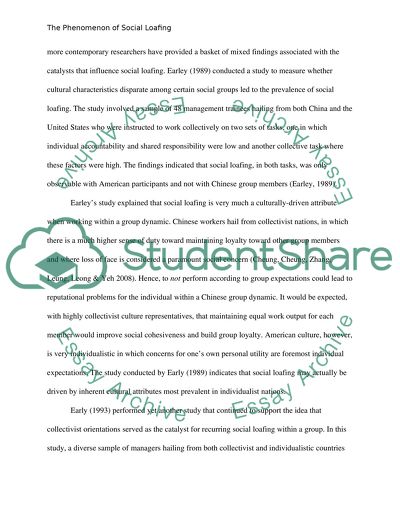Cite this document
(“Social Loafing Research Paper Example | Topics and Well Written Essays - 1750 words”, n.d.)
Social Loafing Research Paper Example | Topics and Well Written Essays - 1750 words. Retrieved from https://studentshare.org/psychology/1480465-social-loafing
Social Loafing Research Paper Example | Topics and Well Written Essays - 1750 words. Retrieved from https://studentshare.org/psychology/1480465-social-loafing
(Social Loafing Research Paper Example | Topics and Well Written Essays - 1750 Words)
Social Loafing Research Paper Example | Topics and Well Written Essays - 1750 Words. https://studentshare.org/psychology/1480465-social-loafing.
Social Loafing Research Paper Example | Topics and Well Written Essays - 1750 Words. https://studentshare.org/psychology/1480465-social-loafing.
“Social Loafing Research Paper Example | Topics and Well Written Essays - 1750 Words”, n.d. https://studentshare.org/psychology/1480465-social-loafing.


